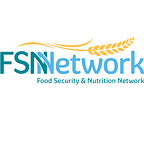Emerging Evidence and Lessons on the Ultra-Poor Graduation Approach (Part Two)
Part Two: Preliminary Outcomes and Findings
By Andie Procopio, IMPAQ International
Welcome back to our blog mini-series where we follow three USAID-funded food security and resilience activities as they apply the Ultra-Poor Graduation Approach (Graduation Approach). The blogs are based on a webinar organized by IDEAL in 2020, where field-based program staff from Bangladesh, Ethiopia, and Uganda discussed how their respective activities have worked to lift households out of extreme poverty, even in the midst of the COVID-19 pandemic.
In case you missed Part One, the three activities highlighted in the series are:
Preliminary Outcomes
In a bit we’ll discuss some very promising emerging outcomes that show how each activity is progressing toward their targets in areas like nutrition, livelihoods, and savings. It is too early for us to determine exactly why all three activities are achieving such impressive outcomes, but it’s clear that they all are:
- Effectively implementing a trusted methodology (the Graduation Approach, see Part One);
- Modifying this Approach to their specific contexts (see Part One);
- Learning while implementing (Part Three); and
- Remaining flexible and adapting to changing circumstances (Part Four).
We’ll look into these important aspects of programming in Part Three and Four of this series, but for now I will give a brief overview of the three activities’ key interventions in each area and show significant indicator results in the tables below.
Nutrition
Nobo Jatra’s participants attend monthly meetings where the growth of children under five is monitored and promoted. Mothers participate in counselling sessions both before and after the birth of their child. Graduating to Resilience households work with coaches to learn about meal planning, a balanced diet, and kitchen gardens, and attend cooking demos. Meanwhile Livelihoods for Resilience promotes perma-gardening and provides poultry vouchers to improve dietary diversity.
Livelihoods
Households participating in Livelihoods for Resilience were able to double their annual income in the first three years of the activity and the average value of their income-generating assets (livestock, etc.) increased dramatically. This was achieved by linking participants to existing Microfinance Institutions and by using an innovation fund to establish or strengthen the last mile service and input providers in remote communities where the activity is implemented. Graduating to Resilience has similarly impressive preliminary outcomes, which can be attributed to their engagement of the private sector to provide quality, affordable agricultural inputs to participants, including drought-resistant seeds, fertilizers, pesticides, and animal medicines. Nobo Jatra delivers an intensive entrepreneurial literacy training focusing on technical capacities and business acumen, which has enabled households to draw a higher income from an increased number of income sources and assets.
Savings
Each activity organizes savings groups and promotes financial inclusion through private sector engagement. Graduating to Resilience and Nobo Jatra implement Village Savings and Loans Associations (VSLAs), while Livelihoods for Resilience implements the Village Economic Social Associations methodology to teach financial literacy, savings, provide access to financial capital, and linkages to the formal financial sector to communities that do not have easy access to these services. Through these interventions, the activities have realized these increases in savings:
Other Preliminary Outcomes
Summary
The preliminary findings from these activities further support evidence from a six-country study released in 2015, which found that the Graduation Approach boosted livelihoods, assets, income, and health among the ultra-poor in Ethiopia, Ghana, Honduras, India, Pakistan, and Peru over three years. Graduating to Resilience, Nobo Jatra, and Livelihoods for Resilience all reported increased savings, increased ownership of productive assets, and improved food security and nutrition in addition to other exciting outcomes. It will be interesting to continue watching these activities to:
- Continue to learn from implementation to adapt and expand the Graduation Approach in subsequent cohorts;
- Understand the extent to which the modifications can be attributed to their program’s successes;
- Learn which treatment arm in the Nobo Jatra and Graduating to Resilience RCTs prove to be the most cost-effective to scale these models to new contexts — the standard graduation approach; a group coaching variation; or an empowerment model designed so participants do not receive the asset transfer.
What’s next in this series?
Here’s a preview of what’s coming up in this series:
- Lessons learned on participatory approaches to targeting, how to achieve nutrition outcomes, private sector engagement, and addressing gender and social norms (Part Three).
- Adaptations made during COVID-19, including conducting context assessments, modifying savings groups, increasing or adapting market interventions and private sector engagement, and remote implementation (Part Four).
ICYMI: Part One provided an overview of the Graduation Approach as well as programmatic adaptations such as layering and integration, testing cost-effectiveness, and expanding savings groups for greater peer support and learning.
